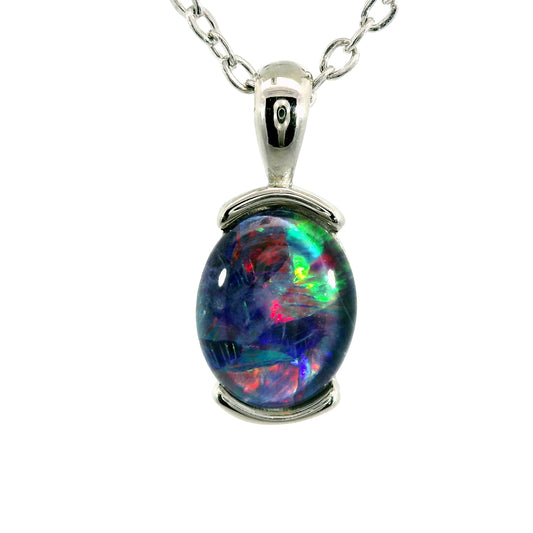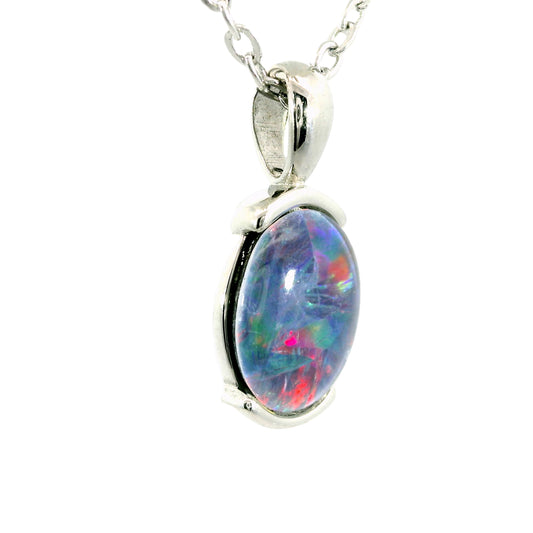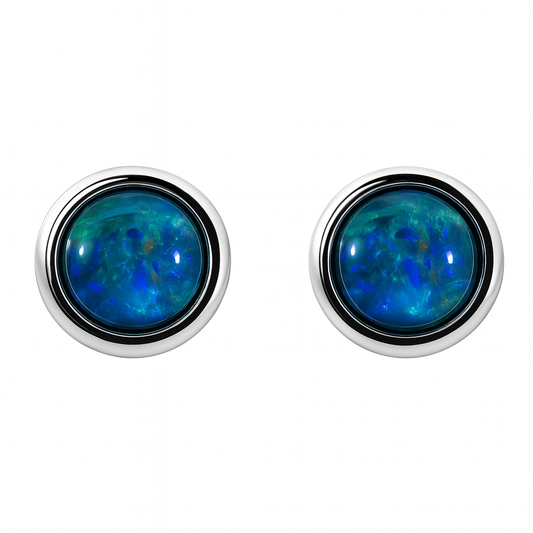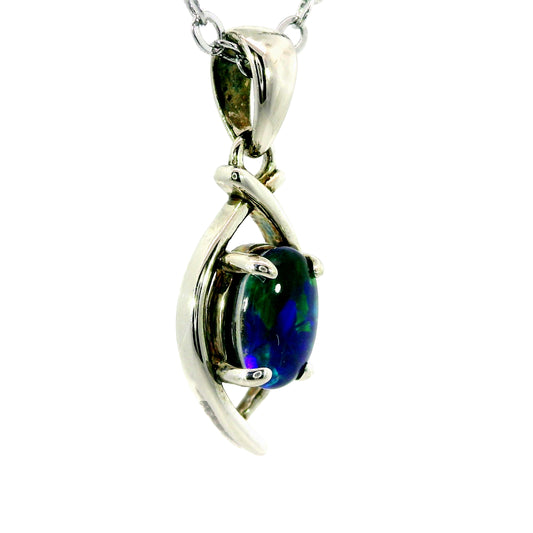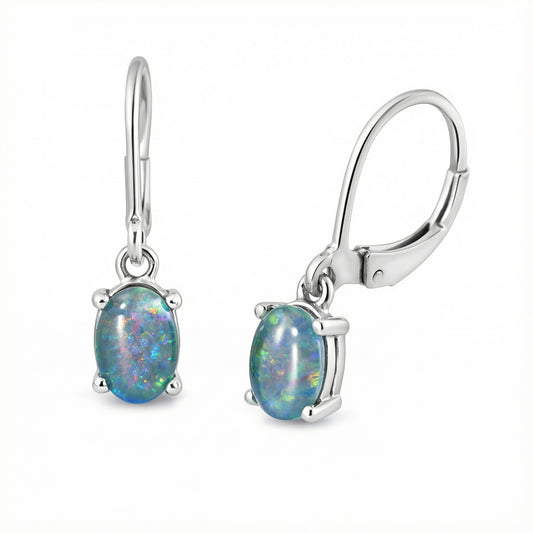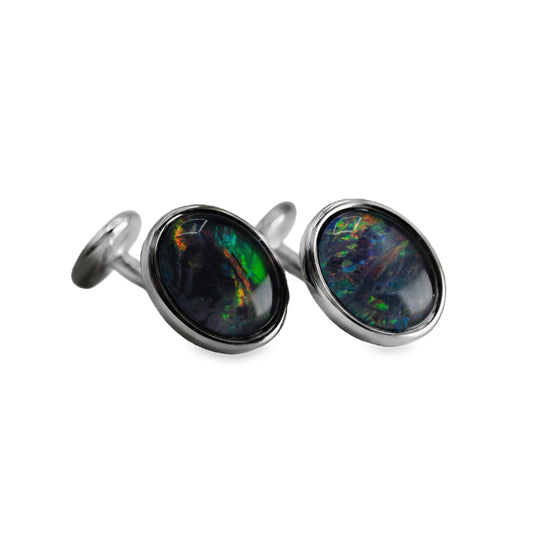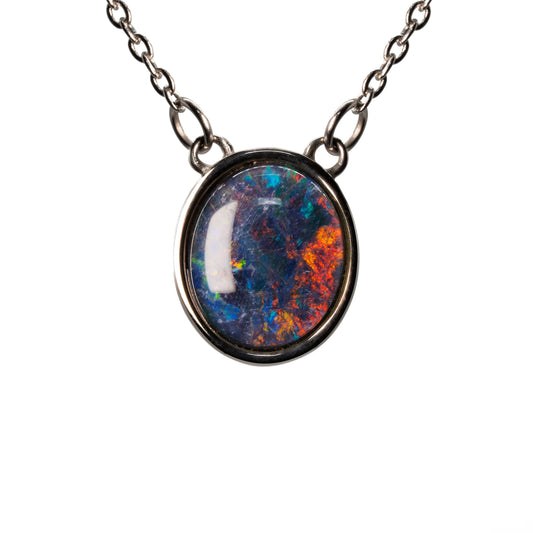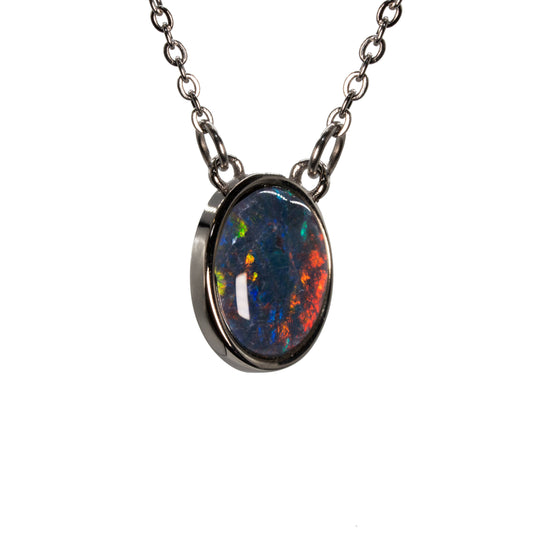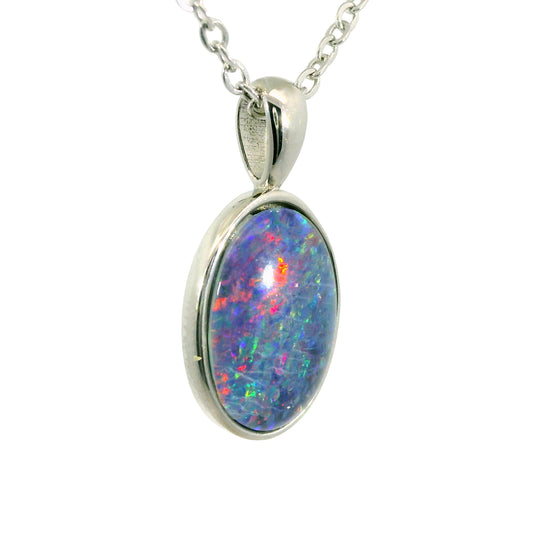Tips for Cabbing and Carving Opals
|
Cutting opals is a delight, but gem cutters may encounter a number of challenges when cabbing. However, you can achieve success with some carving techniques and a little imagination. Donald Clark wrote an article to show how to carve opals with a creative mind. |
Carving Opals With Thin Fire Layers
Cutting through a thin layer to expose fire-like colour is a common challenge when carving opals. Donald Clark (CSM founded the International Gem Society in 1998), has seen this challenge first hand. This is especially so, when he recalls owning an opal that stayed in his scrap box for years. One day, after a close inspection, Clark found a red broad flash under the pinfire. He decided to cut it deeper, with the image below being an indication of the opal he started with. The opal weighed 6.51 carats, with no tapering at the sides nor sanding at the back. There was a half-carat waste in shaping this stone, making its 'maximum size potential' around six carats.

[Using a Cratex Wheel]
Clark began the 'opal transformation' by simply sanding it on a 600 wheel. In doing this, the 'red broad flash' became visible, but at the cost of losing key 'fire' around the opal's edges; the stone needed to be cut lower in the centre, but this could not be done through normal means, since the 'fire layers' weren't flat. In order to rectify this, Clark took a wide Cratex wheel and began cutting into the fire layer, working from the centre out. The red flash was becoming more visible, just a thin ways down from what could originally be seen.
“I kept cutting until I was all the way into the colour layer I wanted. With the Cratex, I could easily cut slowly and accurately. When I reached the layer, it was so close to being flat that I could finish it with conventional tools.” (引用样子)
Here is a picture showing the stone about halfway through the cutting process.

[The Result]
Finally, here you see the finished stone, weighing in at 4.63 carats. It lost some weight around the edges, but half of it is now broad flash red. Clark was surprised to find that the red is also a rolling flash! The value of the gem approximately doubled.

Carving Opals With Surface Potch
Opals often have potch or sandstone inclusions right in the middle of the crown. The image below is a clear example of this very thing. It has some sandstone between the fire layer and the base and a big patch of sand on top of the fire.

Clark began by shaping the stone, and in doing so, removed a majority of the waste, leaving the opal to weigh 6.05 carats. Fortunately, Clark found that the fire layer was fairly thick. He continued by removing the sand in the middle using a cone-shaped Cratex tool, leaving a depression where the sand used to be. 
Finally, Clark needed to shape the stone. This step was done using standard cabbing equipment. However, Clark noticed that there had been a lot of chipping near the top of the opal, forcing for the stone to be altered and made smaller. After doing all of this shaping and sanding, Clark polished the depression using diamond on a hard felt cone, before finally polishing the remainder of the stone.
The final result shows beautiful colour, and weights 4,52 carats, which is an amazing final result for something that "looked like scrap"!
Carving Opals and Combining Gemstones
There are many questions that arise when looking at an oddly-shaped gemstone, like the one found and shaped like Clark.
Clark recommends a combination of "different stone pairings...It’s worth the effort and could lead to a stunning and original piece".
Here’s another heart breaker from Clark’s scrap box he considered using to illustrate techniques for carving opals. This opal has excellent fire, except for a big dead area in the centre. (You may find stones with sand holes in their centres, which pose a similar problem).
With a bit of imagination, Clark can see carving out the centre and filling the hole with another gem. Here’s the same picture, but with a red spinel digitally added to the centre. I haven’t actually cut this gem, but this is good inspiration.

It’s no secret that hard-to-cut opal cabs sells for the best prices. With your imagination and some carving skills, you can turn some of these bargain stones into first-class jewels.
For more information on the tools you’ll need, see Cabochon Carving Tools and Techniques also written by Clark.
|
About the author: Donald Clark CSM founded the International Gem Society in 1998. Donald started in the gem and jewelry industry in 1976. He received his formal gemology training from the Gemological Institute of America (GIA) and the American Society of Gemcutters (ASG). The leers "CSM" after his name stood for Certified Supreme Master Gemcutter, a designation of Wykoff's ASG which has often been referred to as the doctorate of gem cutting. The American Society of Gemcutters only had 54 people reach this level. Along with dozens of articles for leading trade magazines, Donald authored the book "Modern Faceng, the Easy Way." |
Source:
Clark, D. (2020). Tips for Cabbing and Carving Opals - International Gem Society. Retrieved 14 July 2020, from https://www.gemsociety.org/article/tips-carving-opals/












































































































